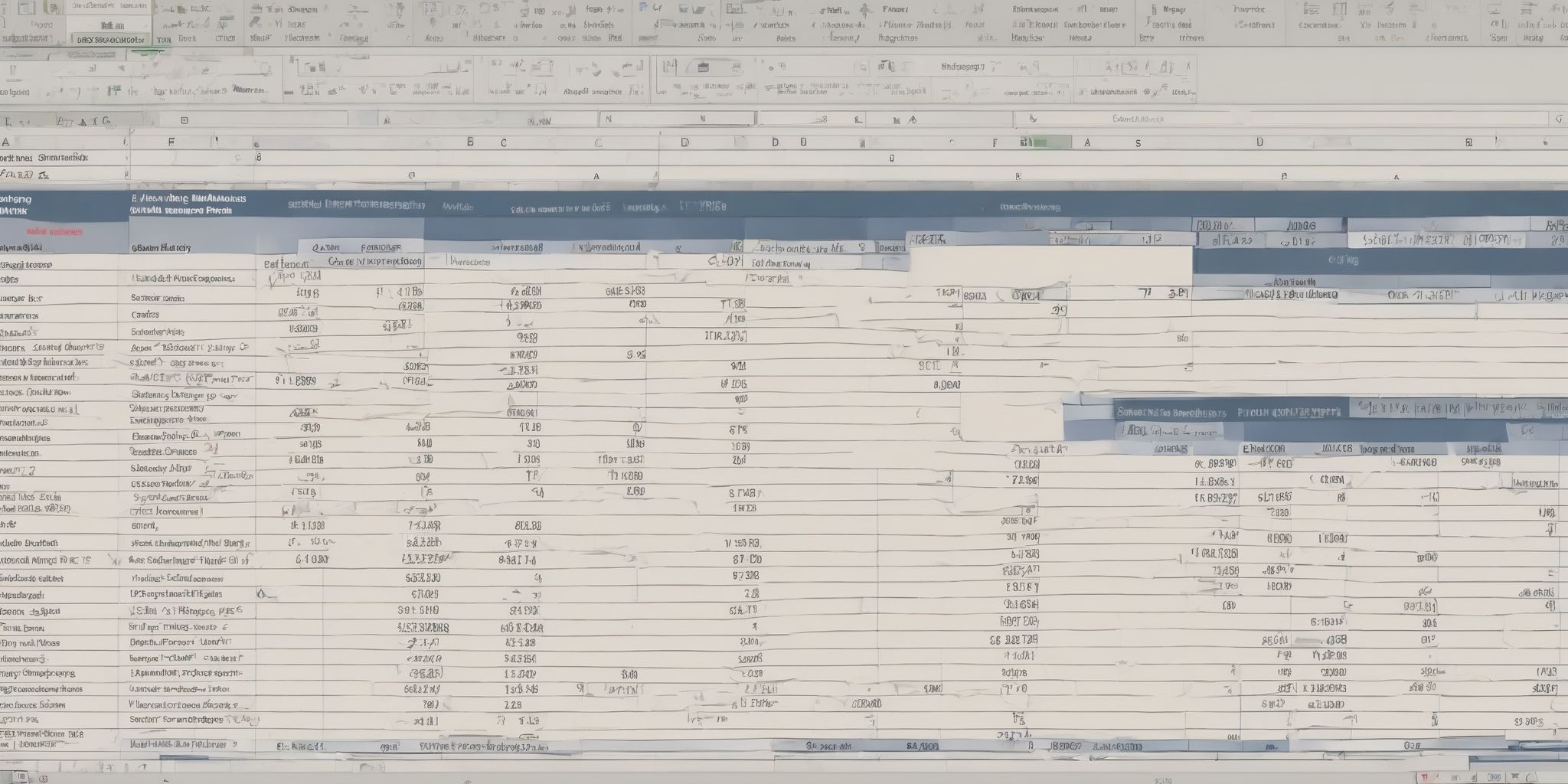Exploring the Foreign Exchange Market in Norway
Have you ever wondered what it would be like to dive into the world of international currencies and gain insights into the dynamics of the global economy? Well, look no further than Norway's foreign exchange market! With its fascinating blend of historic trading traditions and modern financial innovations, Norway offers a unique vantage point for exploring the intricacies of the foreign exchange market.
So, if you're curious about the forces driving currency fluctuations, the role of central banks, and the impact of globalization, join us as we embark on an exciting journey into the heart of Norway's foreign exchange domain. Get ready for a captivating exploration that will leave you with a newfound understanding of this ever-evolving market!
Overview of the Foreign Exchange Market
Foreign Exchange Norway: Overview of the Foreign Exchange Market
- The foreign exchange market, also known as the forex market, is a decentralized global market where currencies are traded.
- It operates 24 hours a day, five days a week, allowing participants to trade currencies at any time.
- It is the largest and most liquid market globally, with daily trading volumes exceeding trillions of dollars.
- The market is highly influenced by factors such as economic indicators, government policies, and market sentiment.
- Currency pairs, such as USD/NOK or EUR/NOK, are traded in the Norwegian foreign exchange market.
- Participants in the market include commercial banks, the Central Bank of Norway, and foreign exchange brokers.
- Traders in the market use various strategies, such as technical analysis and fundamental analysis, to make trading decisions.
Importance of the Foreign Exchange Market in Norway
The Foreign Exchange Market in Norway holds significant importance for both individuals and businesses engaged in international transactions. It allows Norwegian companies to trade currencies and manage their exposure to foreign exchange risk, ensuring stability in international trade. For individuals, the foreign exchange market facilitates currency conversions when traveling abroad or making international online purchases.
Moreover, it acts as a platform for investors seeking opportunities toprofit from fluctuations in currency values. By participating in the foreign exchange market, investors can diversify their portfolios and potentially enhance their returns.
Foreign Exchange Market Participants in Norway
Commercial Banks
Commercial banks are significant participants in the foreign exchange market in Norway. They facilitate currency exchanges for businesses, individuals, and institutional clients. These banks offer various foreign exchange services, including spot transactions, forward contracts, and options. They also provide market information and advice to clients regarding currency movements and risk management strategies.
For example, commercial banks may assist companies in hedging against currency fluctuations by recommending appropriate financial instruments. Moreover, they play a crucial role in providing liquidity to the market by actively quoting bid and ask prices for currency pairs.
As a result, commercial banks are instrumental in catering to the diverse foreign exchange needs of market participants in Norway.
Role of Commercial Banks in Foreign Exchange Trading
Commercial banks play a significant role in foreign exchange trading in Norway. They act as intermediaries between buyers and sellers, facilitating currency transactions. These banks offer a range of services such as currency conversion, hedging strategies, and risk management solutions. They provide access to a wide range of currency pairs, allowing traders to engage in various trading strategies. Commercial banks also offer research and analysis to help traders make informed decisions.
Additionally, they provide competitive pricing and liquidity, ensuring efficient execution of trades. Access to the foreign exchange market through commercial banks enables individuals, businesses, and institutions to participate in currency trading and manage their foreign exchange exposure effectively.
Central Bank of Norway
The Central Bank of Norway, known as Norges Bank, is a significant participant in the foreign exchange market. It regularly intervenes to influence the value of the Norwegian Krone (NOK).
For example, if the Krone becomes too strong, Norges Bank may sell foreign currencies to weaken it. Conversely, if the Krone weakens, it may purchase foreign currencies. Traders should pay attention to the interventions and announcements made by Norges Bank, as they can impact currency exchange rates. Understanding the central bank's actions and policies can help traders make informed decisions and manage their foreign exchange positions effectively in Norway.
Intervention in the Foreign Exchange Market
The Central Bank of Norway occasionally intervenes in the foreign exchange market to influence the value of the Norwegian Krone. This intervention typically occurs when the bank believes that the exchange rate is deviating too far from its desired level.
For example, the central bank may buy or sell NOK in large quantities to counteract excessive appreciation or depreciation. By doing so, they aim to stabilize the currency and maintain favorable economic conditions. However, it's important to note that intervention is not a guaranteed success and its effectiveness can vary depending on market dynamics and investor sentiment. Traders and investors should be aware of potential central bank interventions when considering their foreign exchange trading strategies.
Foreign Exchange Brokers
Foreign exchange brokers play a significant role in the foreign exchange market in Norway. They provide services that facilitate currency trading for individuals and businesses. Some key points about foreign exchange brokers include:
- They act as intermediaries between buyers and sellers in the market, executing currency transactions on behalf of their clients.
- Brokers offer access to a wide range of currency pairs, allowing traders to diversify their portfolios.
- They may provide research and analysis tools to assist traders in making informed decisions.
- Brokers often offer competitive spreads and leverage, enhancing trading opportunities.
- Some brokers also offer additional services such as educational resources and customer support.
By partnering with a reputable foreign exchange broker, individuals and businesses can effectively navigate the foreign exchange market and optimize their trading strategies.
Services Provided by Foreign Exchange Brokers
Foreign exchange brokers in Norway offer a range of services to facilitate currency trading. They provide access to the foreign exchange market, allowing individuals and businesses to buy and sell currencies. Brokers typically offer various trading platforms and tools, enabling traders to analyze market trends, place trades, and manage their positions. They also provide real-time market quotes, news updates, and research materials to help inform trading decisions.
Additionally, brokers may offer leverage, allowing traders to amplify their trading positions. Some brokers may specialize in certain types of trading, such as day trading or algorithmic trading. It is important to research and compare brokers to find one that meets specific trading needs and offers competitive pricing.
Characteristics of the Foreign Exchange Market in Norway
Currency Pairs Traded
The foreign exchange market in Norway involves the trading of various currency pairs. Popular pairs include EUR/NOK, USD/NOK, and GBP/NOK. These currency pairs reflect the exchange rates between the Norwegian Krone and other major currencies. Traders in Norway consider factors such as economic indicators, government policies, and market sentiment when deciding which currency pairs to trade.
For example, a trader may monitor the EUR/NOK pair to assess the strength of the Euro against the Norwegian Krone. Understanding the dynamics of different currency pairs allows traders to identify potential opportunities and make informed trading decisions in the foreign exchange market in Norway.
Trading Volume and Liquidity
Trading Volume and Liquidity are important considerations in the Foreign Exchange market in Norway. Higher trading volume and greater liquidity lead to tighter spreads, making it easier and more cost-effective to execute trades. This allows traders to enter and exit positions smoothly, without significant price slippage.
For example, during the overlapping trading hours of the European and American markets, there tends to be higher trading volume and increased liquidity, providing more opportunities for traders to find suitable counterparties. Conversely, during holidays or significant economic events, trading volume and liquidity may decrease, leading to wider spreads and potentially limited trading opportunities. Monitoring trading volume and liquidity can help traders optimize their trading strategies and enhance their chances of executing profitable trades.
Market Hours and Time Zones
Foreign exchange trading in Norway operates around the clock due to the global nature of the market and the involvement of different time zones. The market opens on Sunday evening in New Zealand and closes on Friday evening in the United States. Traders can take advantage of the overlapping trading hours between different financial centers to increase market liquidity and potentially capture profitable trading opportunities.
For example, during the overlap of the European and U.S. trading sessions, there tends to be high trading activity. Traders should consider these time zones and plan their trading strategies accordingly to optimize their chances of success in the foreign exchange market.
Factors Affecting the Foreign Exchange Market in Norway
Economic Indicators
Economic indicators play a significant role in the foreign exchange market in Norway. Traders closely monitor these indicators as they provide insights into the country's economic health and potential currency movements. Key indicators include GDP growth, inflation rates, unemployment figures, and interest rates.
For example, if Norway's GDP growth exceeds expectations, it may strengthen the Norwegian krone. Alternatively, high unemployment rates may weaken the currency. Traders analyze these indicators to make informed trading decisions and capitalize on potential currency fluctuations. Monitoring and understanding economic indicators is crucial for successful foreign exchange trading in Norway.
Government Policies
Government policies have a significant impact on the foreign exchange market in Norway. For instance, changes in interest rates set by the Norwegian central bank can affect the attractiveness of the country's currency for foreign investors. Economic policies and regulations implemented by the government may also influence currency valuations.
Additionally, fiscal policies, such as government spending and taxation, can impact the overall economic stability of the country, which in turn affects the foreign exchange market. Understanding and staying updated on relevant government policies can help traders and investors make informed decisions when participating in the foreign exchange market in Norway.
Market Sentiment
Market sentiment refers to the overall attitude or feeling of traders and investors towards a particular currency or the foreign exchange market as a whole. It can greatly influence currency prices and trading decisions.
Foreign Exchange Trading Strategies in Norway
Technical Analysis
Technical analysis in foreign exchange trading plays a significant role in understanding market trends and making informed trading decisions. Here are a few important aspects to consider:
- Chart Patterns: Identifying patterns like head and shoulders, double tops/bottoms, and triangles can indicate potential reversals or continuation in currency pairs.
- Moving Averages: Using moving averages helps to smooth out price data and identify overall trends, such as the 50-day or 200-day moving average.
- Support and Resistance Levels: These levels represent price levels where the currency pair has historically had difficulty breaking above or below, indicating potential opportunities for entry or exit points.
- Indicators: Utilizing indicators, such as the Relative Strength Index (RSI) or Moving Average Convergence Divergence (MACD), can provide insights into overbought or oversold conditions and potential trend changes.
By incorporating technical analysis into your foreign exchange trading strategy, you can enhance your ability to identify potential entry and exit points, manage risk, and improve overall trading performance.
Fundamental Analysis
Fundamental analysis is a key component of foreign exchange trading in Norway. It involves evaluating economic, political, and social factors to assess the intrinsic value of a currency. Here's a concise overview:
- Economic indicators: Analyzing GDP growth, inflation rates, and employment data can help predict currency movements.
- Interest rates: Changes in central bank interest rates influence currency values. Higher rates often attract foreign investment.
- Political stability: Political events and policies can impact currency markets. Elections, government stability, and geopolitical tensions should be considered.
- Trade balance: A country's trade surplus or deficit affects its currency. Positive balances usually strengthen the currency.
- Global economic trends: International developments like recessions, trade wars, or natural disasters can have ripple effects on currency pairs.
By examining these fundamental factors, traders in Norway can make informed decisions and identify potential trading opportunities in the foreign exchange market.
Risk Management
Risk management is an important aspect of foreign exchange trading in Norway. Traders must assess and mitigate the potential risks involved to protect their investments. One common strategy is setting stop-loss orders to limit losses if the market moves unfavorably. Diversification is another effective approach, spreading investments across different currency pairs to reduce exposure to a single currency's volatility.
Additionally, staying informed about economic and political events impacting the foreign exchange market helps traders make informed decisions. By implementing risk management techniques, traders can safeguard their capital and increase their chances of profitability in the foreign exchange market in Norway.
Conclusion
The article investigates the foreign exchange market in Norway, shedding light on its dynamics and significance. It emphasizes how the Norwegian krone is influenced by various factors such as global economic trends, interest rates, and oil prices. The Norwegian foreign exchange market is found to be relatively small but highly liquid, with a significant presence of institutional investors.
The article also delves into the role of the central bank, Norges Bank, in managing the exchange rate and ensuring stability. Furthermore, it highlights the use of currency derivatives to hedge against foreign exchange risks.


